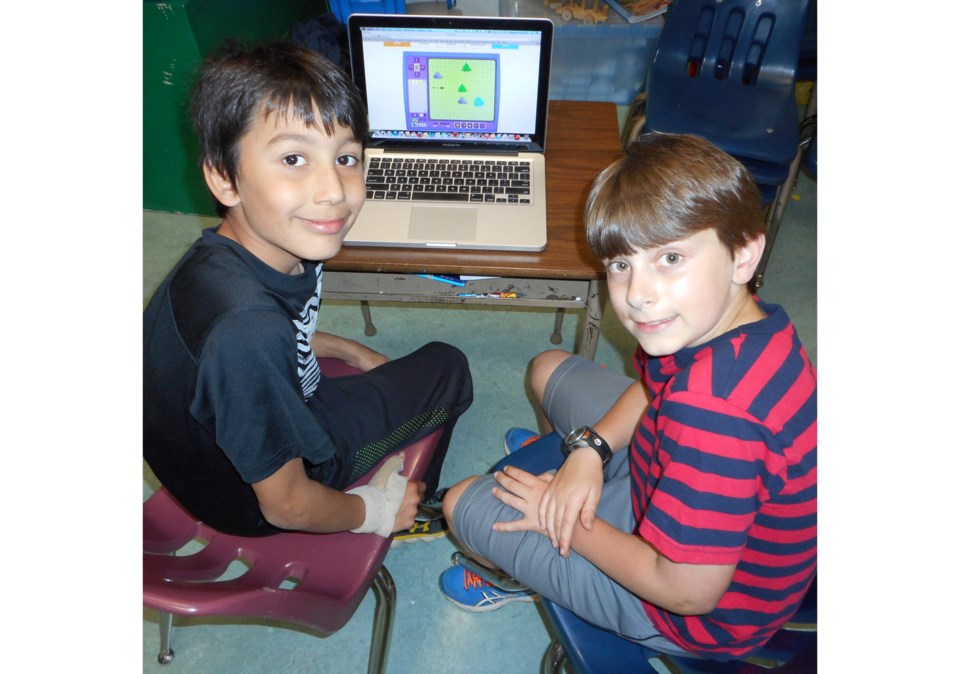Brandon Sekhon and Anthony Irwin were a little anxious to learn coding when they started Grades 3 and 4 last September, but their apprehension disappeared when they found it to be child’s play.
Last fall, Diefenbaker teacher Margaret Choinski decided to teach her Grades 3/4 class coding after attending a professional development day seminar on the subject. She wanted to find something challenging to teach her class that produced tangible results and coding fit the bill. But first, she had to put to rest any preconceived notions regarding what coding is.
“I thought it was going to be difficult,” Brandon said. “When Mrs. Choinski said we are going to learn coding, I thought, ‘Oh my gosh, we are coding a computer?’”
“When I heard about it, I thought it was all about ones and zeros,” Anthony added.
To show what coding is about, Choinski introduced the class to a grid carpet with letters, numbers, pictures and colours. After the students agreed on commands, such as using the letter ‘L’ to go left and ‘F’ to go forward, the kids wrote commands on paper and then physically followed the commands on the carpet, to see if their coding made sense.
“It’s very logical problem solving,” Choinski said. “It’s connecting real life math to school.”
The math component became even more apparent when the lesson went from the grid carpet to the computer. Students were introduced to a math coding game called Turtle Pond, where the objective is to get the turtle into the pond, within a set time. Grid marks can be removed and obstacles can be added in higher levels, requiring the use of angles to make the game more challenging. This introduces students to geometry and measurement.
Some students found coding challenging as it takes patience and lots of trial and error, but others found it easy while others still enjoyed it so much they took further courses on coding at the Richmond Public Library.
“Everybody loved it,” Choinski said. “The ELL [English Language Learner] kids were able to quickly understand it and everybody got good at it.”
The new provincial educational curriculum puts an emphasis on applying reading, writing and arithmetic to the real world, and coding fits into that perfectly, Choinski added, who has been teaching for 25 years.
“There are lots of jobs that are computer based,” Choinski said. “Knowing how they work is useful for everybody.”
And while math is a huge component in coding, Brandon, who enjoys playing video games and is interested in designing them, didn’t even notice it.
“I don’t think there is much math involved,” Brandon said. “It was just a lot of fun.”



